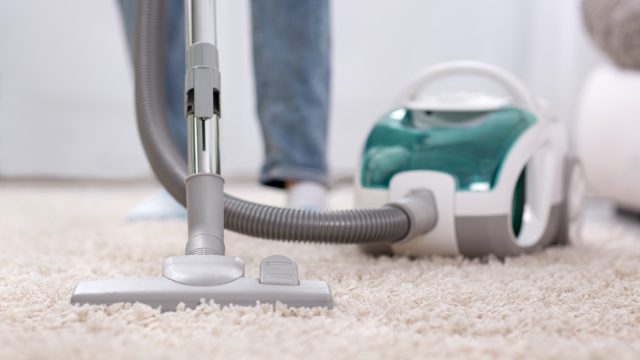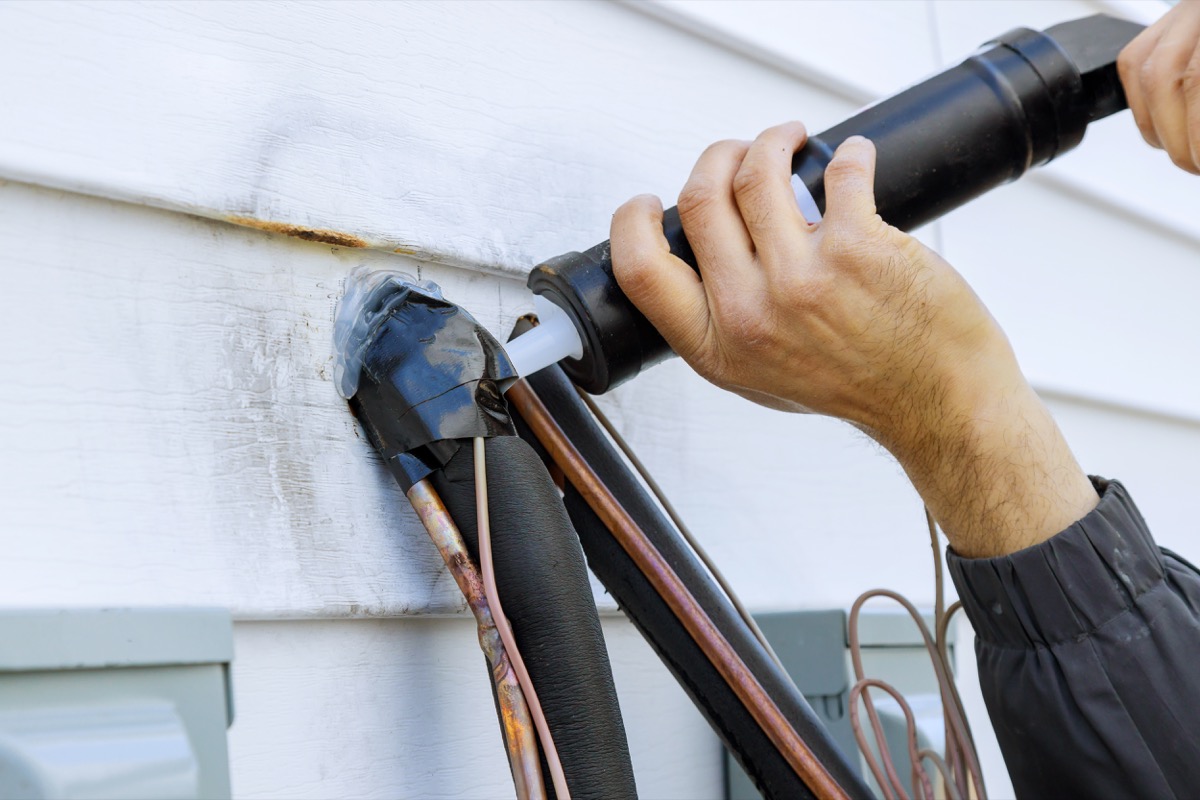If You See This Bug, You Need to Vacuum It Up Immediately, Experts Say

When you spot a pest in your home, it’s easy for panic to set in. You might try to run and hide from the creature, or instinctively attempt to squash it. However, experts warn against trying to smush one bug. If you see this insect in your home, you should instead suck it up with a vacuum. Read on to find out which bug you should get rid of with your Hoover, and for more unusual disposal methods, If You See This Bug in Your Home, Don’t Step on It, Experts Warn.
You should vacuum up elm seed bugs to get rid of them.

According to the University of Idaho, the elm seed bug made its way to the U.S. in 2009. Adult elm seed bugs are “dark chocolate brown with reddish highlights. An identifying feature is a dark, backward-pointing triangle on a rusty-red rectangular mark.” Additionally, they have narrow white bands along the edges of their abdomen. The insect folds its wings back in an X pattern. If you see these bugs, experts say you should vacuum them up immediately, because—as with stink bugs—they release a scent when they are scared or smushed.
“Vacuuming is the best way to control elm seed bugs because it lets you catch them all quickly and minimize the smell,” says professional pest control specialist and entomologist Nicholas Martin. “If you have a dry/wet vacuum cleaner, you can add some soapy water into the dust container in order to prevent the odor from spreading and kill the bugs instantly.” But while vacuuming is the easiest way to get rid of elm seed bugs, Martin says you can’t forget to seal the bag tightly when you throw it out—otherwise, the scent might seep out. And for more on household infestations, discover 5 Things You’re Buying That Bring Bed Bugs Into Your House, Experts Say.
Elm seed bugs can live and multiply for three to five years.

While these bugs don’t harm humans or animals, they are a notable nuisance due to their unpleasant smell. “If you accidentally squish one, you will smell a strong bitter almond odor, which isn’t as nice as it sounds,” says Martin.
The real problem with these insects is that they can live in your home for years and continue to breed. “The bugs are attracted by cooler places inside your house where they can hide from predators,” Martin notes. “It would be a small problem if they died quickly, but these pesky bugs can live up to three to five years and multiply inside your house.” And for subtle signs of insects you need to know, If You Smell This in Your Bedroom, You Might Have Bed Bugs.
Seal off cracks to prevent these bugs from entering your home.

If you notice that elm seed bugs continue to find a way into your home even after you’ve vacuumed up a bunch, you need to find the spot they’re using to enter. “The best practice is to seal all the exterior cracks you can find on the building,” Martin says. He suggests also applying insecticides around the perimeter of your home to discourage the bugs from entering if the problem is significant. And for more useful information delivered straight to your inbox, sign up for our daily newsletter.
Elm seed bugs are found in a handful of U.S. states.

According to the Herald and News, these bugs got their namesake because they mate and lay eggs in elm tree flower clusters. Per the University of Idaho, they tend to invade homes in July and August, where elm trees grow. If you don’t have an elm tree on your property but your neighbors do, you’re still at risk of elm seed bugs invading your home.
Idaho was the first state to report elm seed bugs. The pests can now be found in Utah, Oregon, Washington, and Colorado, according to Martin. He predicts that they will likely spread across the country by 2035. And for more insects that could be invading your space, If Your House Smells Like This, You May Have a Bug Problem.